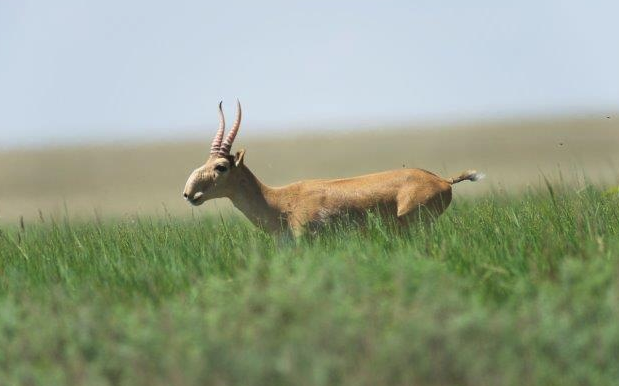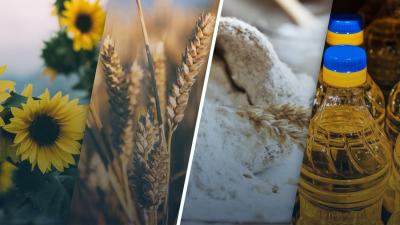
At the end of May, farmers in a number of rural districts of Akmola region complained to the editorial staff of the World of Nan portal that large numbers of wild saiga (40-50 thousand heads each) were ruining crops. The problem, according to the villagers, is occurring for a number of years. Given that many agrarians take out loans for agricultural work, this issue is very sensitive, as one go of such a herd can make a commodity producer go bankrupt.
We sent a request on this issue to the Ministry of Ecology with a request to comment on this situation, as well as to voice possible solutions to the problem.
Below is our response from the Committee for Forestry and Wildlife.
Is the Ministry of Ecology aware of the problem around wild saiga?
- In May and June, the Committee received similar appeals from the heads of agricultural units in Yegindykol and Atbasar districts of Akmola region.
On 18-20 June, on the Committee's instructions, the management of the Republican State Institution Akmola Regional Territorial Forestry and Wildlife Inspectorate and the Central Regional Branch of the State Enterprise "Okhotzooprom" carried out a field visit to the site. A meeting was held with the complainants, during which the issues of trampling the areas under crop were discussed, and necessary explanations were provided.
Thus, farmers were told how to act if saigas entered the sown area. Ways of removing animals without harming them were mentioned, and it was noted that the most effective measure of crop protection is constant patrolling by cars, motorbikes or horses, creating a noise disturbance factor in the way saigas approach agricultural fields.
To prevent saigas from entering the crops, it is also possible to create special forage fields on main migration routes. For this purpose it is possible to use fallow lands, sowing them with perennial forage herbs suitable for saigas. It is also possible to create artificial watering places.
It was noted by representatives of farms that at the beginning of sowing, saigas did enter the sowing fields with large herds, but at present their number on the borders with the sowing grounds has significantly decreased.
How are saiga populations, their movements and their confinement within certain pastures controlled?
- Among wild ungulates, saigas have a special position as one of the most ancient species. However, in 2002, the saiga was listed by the International Union for Conservation of Nature as being in a critical condition. The animal can easily disappear if habitat changes are adverse due to natural or anthropogenic factors.
The Government of the Republic of Kazakhstan is doing a lot of work on saiga conservation. In particular, there is regular population monitoring and a ban on shooting (since 1999), which has helped to restore the number of saigas by approximately 12 times. Today the ban on shooting has been extended until 2023.
As for Akmola region, it is currently home to the Betpak-dala population, which is found in Atbasar, Yegindykol, Zhaksyn, Zharkai and Korgalzhyn districts (depending on migration).
According to the aerial census for 2019, the number of this population was 111,500 individuals. Due to the coronavirus pandemic, no aerial census was conducted in Akmola region in 2020.
At the same time, during the lambing of saigas (in May 2020), about 40,000 individuals were recorded in the border zone of the Atbasar and Zhaksyn districts using a drone. However, this number is not constant, since saigas are characterized by uninterrupted movement within their range.
From a scientific point of view, saigas use their pastures very economically, migrating continuously. Even during grazing, the animals move constantly, so they only tear down some of the plants. This moderate grazing contributes to the normal development of grass cover. And the repeated growth of plants after biting shows an increase in yield of herbaceous mass by more than 2 times. In addition, the saiga tramples the seeds of steppe plants into the soil, which facilitates their successful growth.
It should be noted that with modern agricultural development, saigas have lost most of their summer and autumn pastures. In recent years, there have indeed been cases of saigas entering the sown areas, which used to be their summer pastures. However, scientific studies show that saigas are relatively rarely fed with grains, and mainly trail, lie and eat weeds through them.
Is it possible to move saigas to special pasture areas?
- Artificial resettlement of saigas to other regions of Kazakhstan in amounts sufficient to influence their numbers in Akmola region, is scientifically and practically unreasonable, since saigas are migrating type of an animal.












































Обсуждение